What is Wrong with Me? How to Assess Your Mental Wellness
The nagging question, “What’s wrong with me?” is not merely a fleeting thought but often a deep-seated concern that reflects broader societal misunderstandings about mental wellness.
There have been more times than I care to admit in my own life when I have sobbingly asked the universe what is it about me that makes me leavable? Unlovable? Expendable?
I often felt so alone when screaming this at the top of my lungs. However, I think it is an all-too-common scenario that plagues countless individuals. The idea that we are alone in these kinds of thoughts is only one misconception surrounding this mental health issue.
To address and dismantle these misconceptions, we turned to Dr. Tanveer Padder, a psychiatrist, psychopharmacologist, and an addiction specialist. He offers the unique and profound insight of a mental health professional into the intricacies of this question.
Dr. Padder challenges the stigma associated with mental health issues, particularly the damaging belief that such struggles signify weakness or a personal flaw.
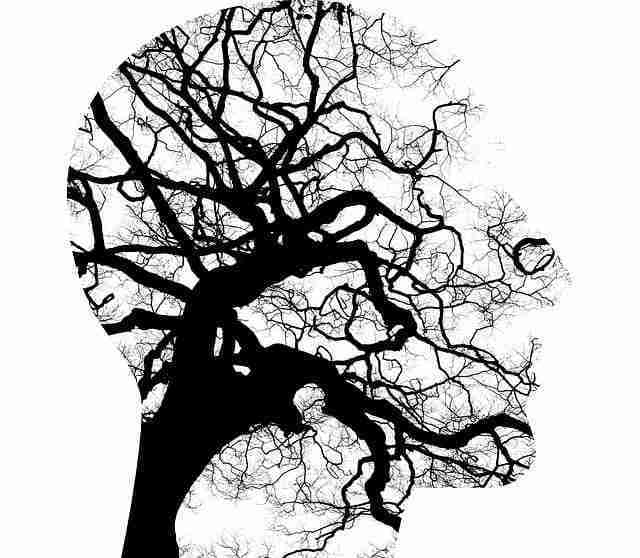
Challenge the Weakness Misconception and Identify the Root Cause
One common misconception that often leads individuals to question their mental health in a negative way is the belief that experiencing mental health issues signifies weakness or a flaw in character.
This misconception can be deeply internalized, causing people to wonder, “What is wrong with me?” This belief discourages people from seeking help and negatively impacts their understanding of mental health.
To challenge and change these perceptions, education, accurate media representation, and compassionate healthcare are key. Educating the public on the complexities of mental health can dismantle stigma and foster empathy.
Media plays a role in shaping societal views, so promoting sensitive portrayals of mental health is crucial. Healthcare professionals can further this progress by discussing mental health openly and without judgment, normalizing the pursuit of help.
By transforming these misconceptions, we can encourage a supportive environment where seeking mental health care is seen as a strength, not a weakness.
Tanveer Padder, Psychiatrist, Psychopharmacologist, and Addiction Specialist
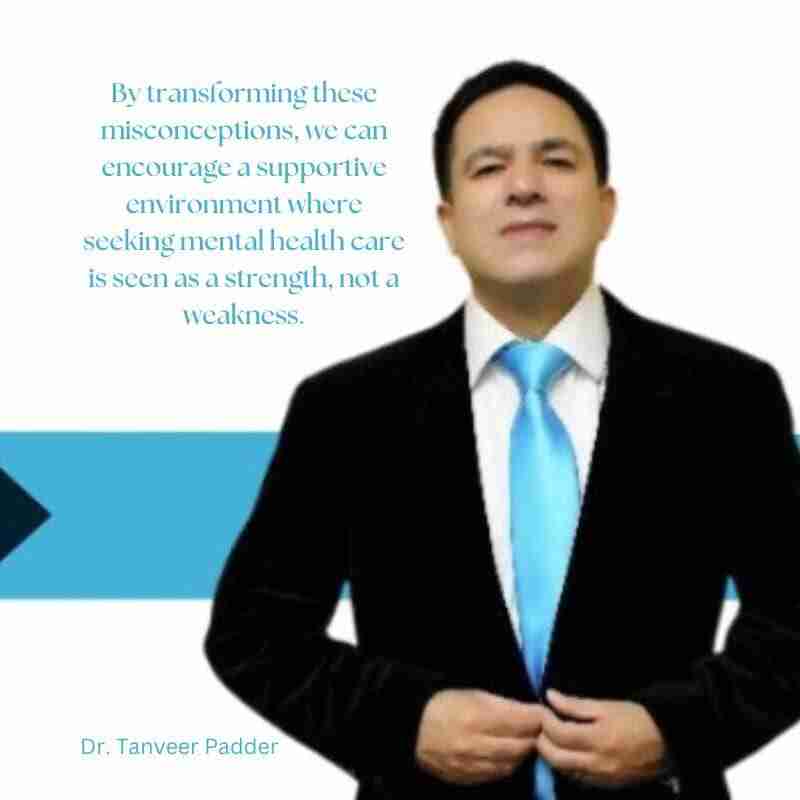
The Echoes of Abandonment on My Overall Well-Being
Growing up, the repeated experience of being abandoned by my parents left a lasting imprint on my psyche. Each departure reinforced a gnawing feeling: “Is there something inherently wrong with me?”
This question burrowed deep, manifesting as self-doubt and anxiety. I dealt with this on my own into adulthood. Luckily, some of my coping skills managed to deal with my complicated emotions in a healthy way.
My more maladaptive coping skills manifested as perfectionism, being overly critical, and being irritable. I did not have a healthy diet and would often feel overwhelmed.
I didn’t put much stock in things like deep breathing or calm-down activities.
Determined to be normal and not become addicted to drugs or end up in jail, I just kept charging ahead.
It wasn’t until I engaged with mental health professionals that I untangled these feelings and addressed my mental health struggles. Through their guidance, I learned that these painful feelings were not reflections of my worth, but scars of my traumatic past.
This journey through my emotional landscape was complex and fraught with moments of profound loneliness and introspection.
Every instance of abandonment or abuse seemed to echo an unspoken judgment about my value as a person. As I worked with therapists and counselors, I slowly began to dismantle the harmful beliefs I had internalized.
I learned to reframe my experiences, understanding them not as evidence of personal failure but as opportunities for resilience and growth.
This shift in perspective was crucial, allowing me to move from a place of pain to one of empowerment and self-compassion.
The support of mental health professionals was instrumental in this transformation, providing a space where I could safely explore my vulnerabilities and strengths.

How Do I Figure Out What’s Wrong with Me?
Identifying the root cause of emotional distress often begins with acknowledging one’s feelings and experiences. For me, talk therapy was a gateway to understanding the negative emotions tied to my childhood.
It provided a space to voice thoughts I had silenced and explore the impact of my early experiences on my current mental state. It’s not uncommon to experience ‘brain fog’ as a symptom of emotional distress, which can be addressed through engaging in talk therapy.
This process involved several key steps. Initially, it was about creating an environment where I felt safe enough to express myself without fear of judgment or repercussion.
My therapists encouraged me to delve into my memories, helping me to connect isolated incidents to larger patterns of feelings and behaviors.
Over time, this exploration brought clarity as I saw the links between my experiences of abandonment and my present struggles with self-esteem and trust.
Regular sessions allowed me to peel back the layers of my emotional armor gradually. I learned to recognize and name my feelings—something I had struggled with for years.
This was not just about understanding what was wrong, but learning how to cope with these discoveries in a healthy way.
Techniques like mindfulness, journaling, and scheduled self-care activities became integral parts of my routine, helping me to manage the overwhelming emotions that surfaced during therapy. I discovered I love yoga, qigong, and adult coloring pages!

Through this reflective and systematic approach, I could uncover the underlying causes of my distress and begin the journey toward healing.
It was a painstaking process, but one that ultimately equipped me with the tools to manage my mental health better and improve my overall quality of life.
Understanding Mental Health Issues: Is It a Disorder or a Typical Response?
The question of whether ‘something is wrong with me mentally’ can be daunting. It was through consistent sessions with a therapist that I learned to differentiate between typical emotional responses and the symptoms of a disorder.
This distinction is crucial for anyone feeling overwhelmed or stuck in a negative spiral. If you feel like something is wrong, then it might be time to reach out to a healthcare professional.
Recognizing the difference between normal fluctuations in mood and more serious concerns, such as mental illness, involves careful observation and professional evaluation.
My therapist introduced me to various diagnostic tools and discussions, which helped clarify the nature of my experiences. We explored my patterns of negative thoughts, emotional reactions, and behaviors in-depth, considering their frequency, intensity, and impact on my daily life.
This exploration was not just about labeling my experiences, but understanding them in a context that could lead to effective management. For instance, feeling anxious before a major event is typical. Yet, persistent, unprovoked anxiety that interferes with daily functioning could indicate an anxiety disorder.
Similarly, everyone experiences feeling sadness, but when sadness becomes pervasive and debilitating, it might be symptomatic of crippling depression.
These insights were pivotal in moving from confusion and self-blame to a more informed perspective on my mental state. With professional guidance, I could adopt strategies that addressed my specific needs.
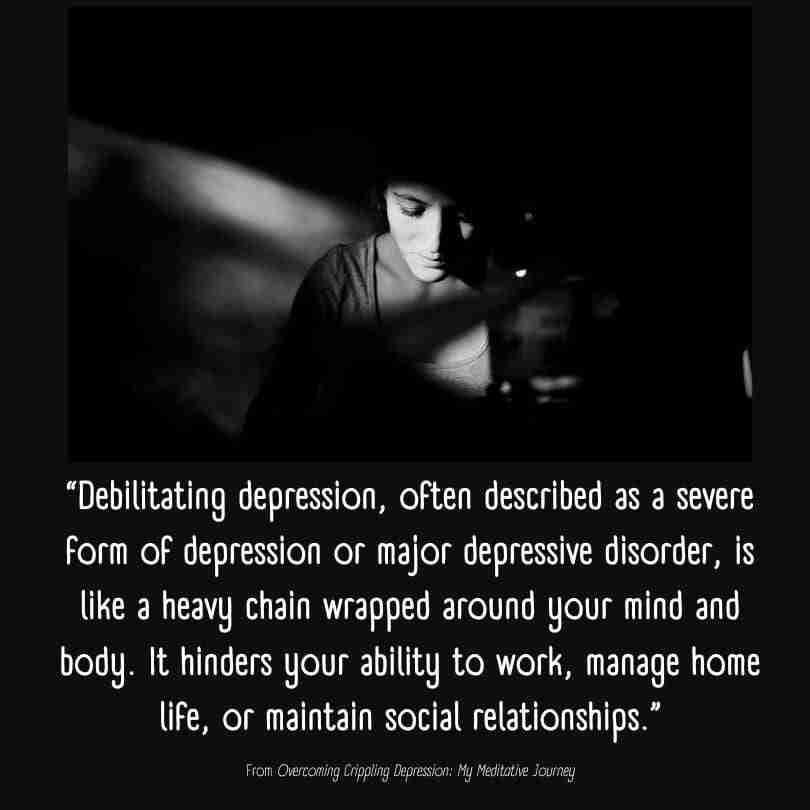
Moving Forward From The Chaos of My Own Thoughts and Feelings
I adopted a holistic approach to my mental health, emphasizing the importance of scheduling self-care time as part of this comprehensive strategy. Incorporating relaxation techniques, focusing on self-awareness, having a growth mindset, and spending time out in the fresh air all helped.
Therapy also helped me realize I needed a different career path and didn’t have to live life feeling stuck.
I felt like I could finally focus on who I wanted to be. Not who my trauma had turned me into. One thing my therapist said to me early on that really stuck was, “You have no idea who you would be without all this trauma. It happened when you were so young and just kept coming.”
Trauma Impacts All Your Decisions
She was right. I knew who I didn’t want to be and the things I didn’t want to do. I had made all these trauma-induced decisions. But very few of them resonated deep within me. This also added to the overall feeling of “Something is wrong.”
I spent a few years in therapy. They were helpful in peeling back a lot of the layers. I quit the job I hated and rediscovered who I could be. I not only found a better job but my dream job. It could truly not have been more perfect had I plucked it out of my head.

My experience with mental health inspired me so much that I decided to go back to school (again) and work on a Ph.D. in Psychology. What I saw in the future was Dr. Dahl, Managing Editor of one of the most inspirational sites on the web.
And the author of a few books, too! If we are going to daydream, let’s do it right!
However, even in those moments when life seems to be going along perfectly…there is the opportunity for something to go wrong. After being there for about four years, I was recently laid off from that dream job.
Of course, this caused a lot of stress, but I thought I had all the tools needed to handle it.
Navigating Setbacks: Confronting ‘Little t trauma’
The layoff from my dream job after four rewarding years brought with it a flood of old insecurities and doubts. Suddenly, I found myself grappling with those familiar whispers: “What’s wrong with me?”
This wasn’t just about losing a job; it was a trigger, stirring the “little t trauma” I hadn’t fully addressed—those subtle yet persistent impacts of past adversities that I thought I had overcome. We spent so much time on the ‘Big T Traumas’ that I had neglected the smaller ones that eroded my self-esteem.
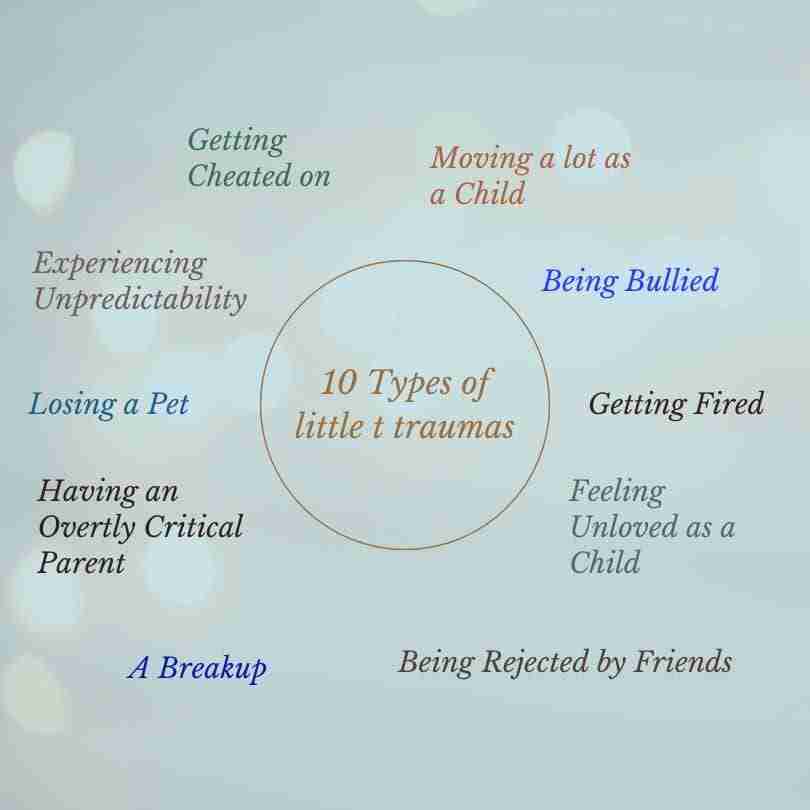
Experiencing physical illness became an unexpected challenge during this period, as the stress and upheaval disrupted my sense of stability, reviving feelings of inadequacy and fear that I had not fully dispelled.
It was a stark reminder of the deep-seated issues still lurking beneath the surface, awaiting resolution.
Despite all that, something inside me told me to start my own website and impact people in an entirely different way than I had before. I had the knowledge of how to do it. I had been honing my writing skills, and diving deep into the world of psychology.
While trying to forge my path as an entrepreneur in a complicated space, this resurgence of past traumas forced me to confront the reality that healing is not linear but a continuous journey.
Determined not to let this setback define my progress, I recognized the need to enhance my coping strategies. It was crucial to not only address these immediate feelings of despair, but also to fortify my resilience against future uncertainties.
This led me to intensify my self-care regimen, which became a cornerstone of my daily life. It enabled me to add healing back onto my to-do list while I built something meaningful.
Embrace a Holistic Self-Care Routine if You Are Asking “What is Wrong With Me?”
In response to the upheaval, I devised a comprehensive self-care routine to manage my mental health and spiritual well-being better. This routine was not just about finding temporary relief but about creating a sustainable practice that could support me through life’s unpredictable paths.
Yoga became more than a physical exercise; it was a sanctuary where I could cultivate calm and regain my center. Integrating essential oils with meditation enhanced this experience, allowing me to achieve deeper relaxation and mindfulness.
The aromas helped anchor my senses, bringing a sense of peace and presence that was profoundly healing.
Focusing on my spirituality offered a broader perspective on my circumstances. It provided a framework for understanding the ebb and flow of life’s experiences as part of a larger, more meaningful journey.
This spiritual grounding reminded me that setbacks were not indicators of personal failure but opportunities for growth and enlightenment.

Incorporating self-help books into my routine emerged as a vital component, offering insights and strategies to support my mental health and spiritual well-being further.
These books served as valuable resources for personal growth and achieving my goals, enriching my self-care practice with a wealth of knowledge and inspiration.
This enriched approach did more than alleviate my immediate distress. It empowered me to navigate through life’s challenges with greater resilience and insight.
As I continued to explore these practices, I found that they not only soothed my current pains, but also equipped me with the tools to address unresolved traumas more effectively.
The Benefits of Mindfulness Activities
Incorporating mindfulness into my daily routine has been transformative, particularly through activities like adult coloring, which has gained recognition not just as a leisure activity but as a form of stress relief.
These mindfulness practices serve as vital components of my mental health care, offering regular check-ins with my emotional state and providing a much-needed pause from the daily grind.
Mindfulness activities, by their very nature, encourage moment-to-moment awareness, which is essential in cultivating a peaceful mind.
They anchor me in the present, helping to alleviate worries about the past or anxieties about the future. This focus on the “now” through simple, repetitive actions—like coloring intricate patterns or practicing mindful breathing—can significantly reduce stress levels and improve overall mental clarity.
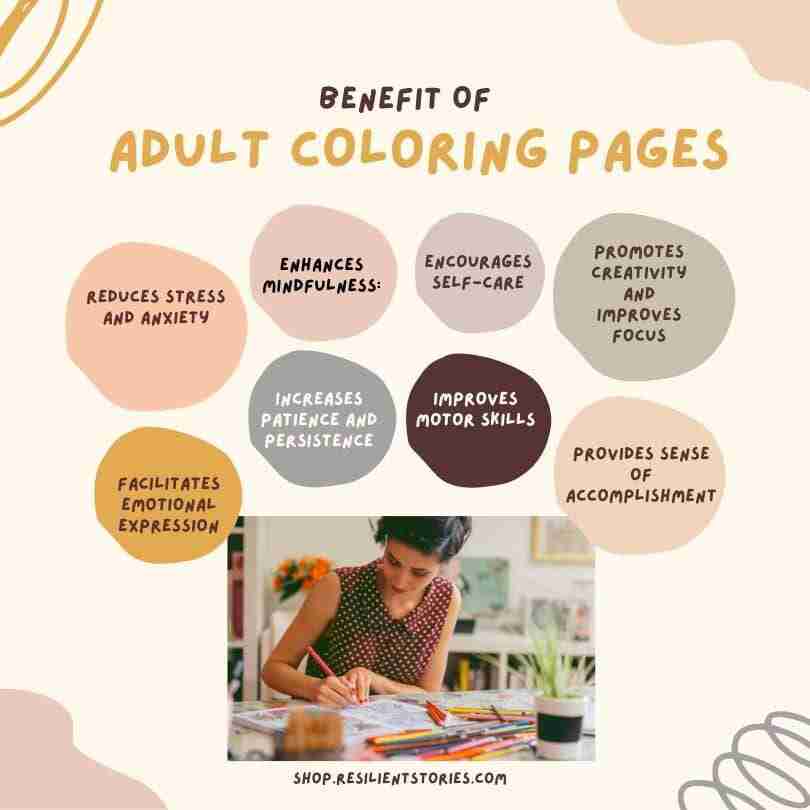
These practices have been shown to enhance concentration and patience, skills that are beneficial across all areas of life.
By regularly engaging in these activities, I have noticed a marked improvement in my ability to focus and remain calm in stressful situations. This is not just about distraction; it’s about actively reshaping the neural pathways associated with stress and relaxation responses in the brain.
Furthermore, integrating mindfulness into my routine has fostered a greater sense of self-compassion and acceptance. It allows me the space to approach my feelings and experiences without judgment.
In moments of mindfulness, I am reminded that my thoughts and emotions are transient and do not define my worth or capabilities. This perspective is liberating, particularly on days when I feel overwhelmed or critical of myself.
Don’t Let Negative Self-Talk Like “Something is Wrong With Me” Keep You Down
Throughout this exploration of mental health, we have uncovered the profound impact of addressing and questioning, “What’s wrong with me?” This is not merely a reflection of personal struggle, but a broader societal challenge that requires compassion, understanding, and continuous engagement.
My journey through the landscapes of abandonment, self-doubt, and rediscovery has shown me that the path to healing is not linear but is rich with opportunities for growth and transformation.
By challenging misconceptions about mental health, such as the stigma of weakness, and embracing practices like mindfulness and self-care, we can shift our perspective from judgment to support.
The insights shared by Dr. Tanveer Padder and my own experiences underline the importance of seeking professional guidance and building a supportive network that encourages our journey toward better mental health.
As we move forward, let us remember that questioning our worth during challenging times is a part of being human. More importantly, it’s a call to action—a reminder to engage with ourselves and the world with empathy and courage.
Together, through education, understanding, and proactive mental health practices, we can create an environment where everyone feels valued and empowered to seek the help they deserve.
Let us know in the comment section how you overcame feeling like something is wrong with you. If you are experiencing a mental health concern, please reach out to someone and get help.




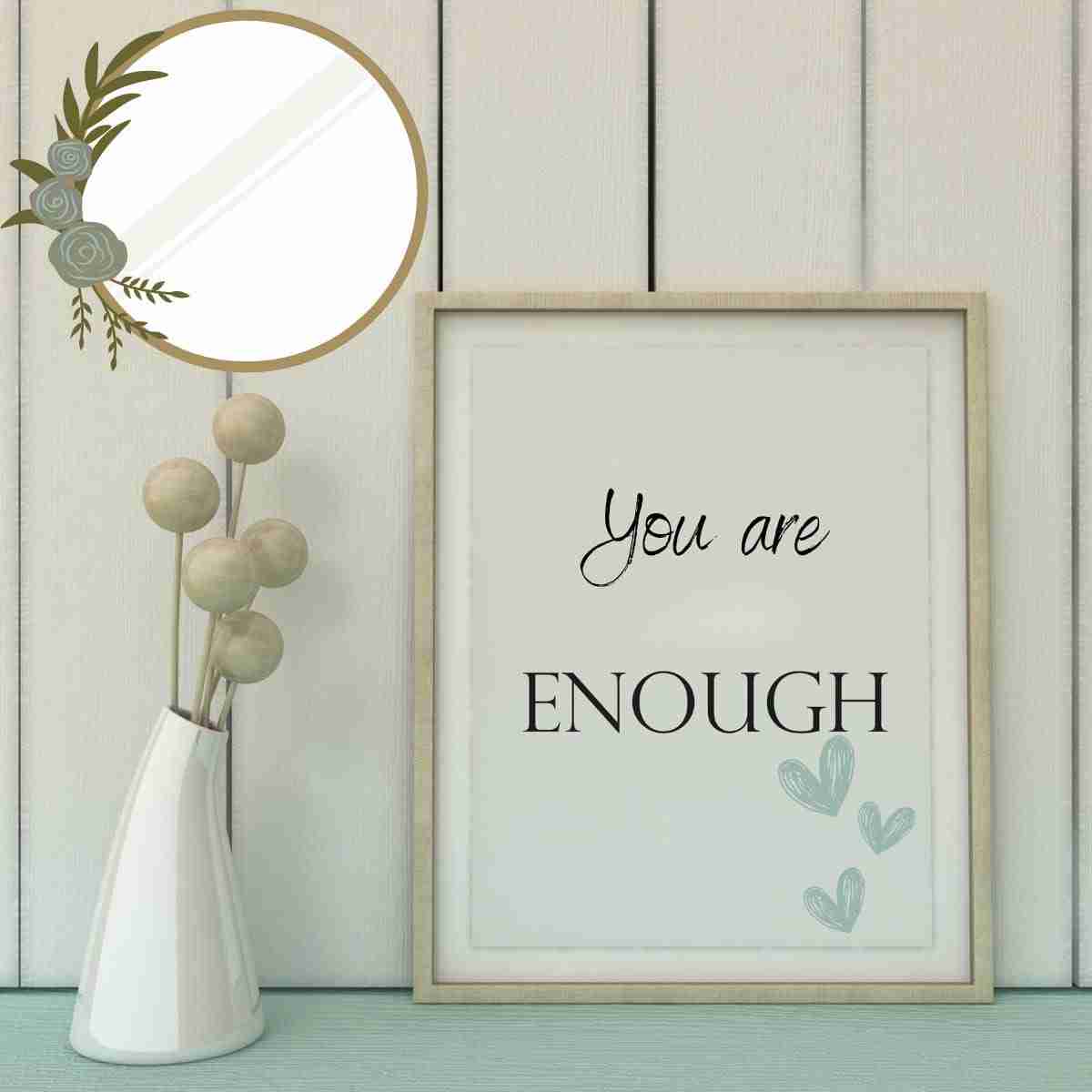

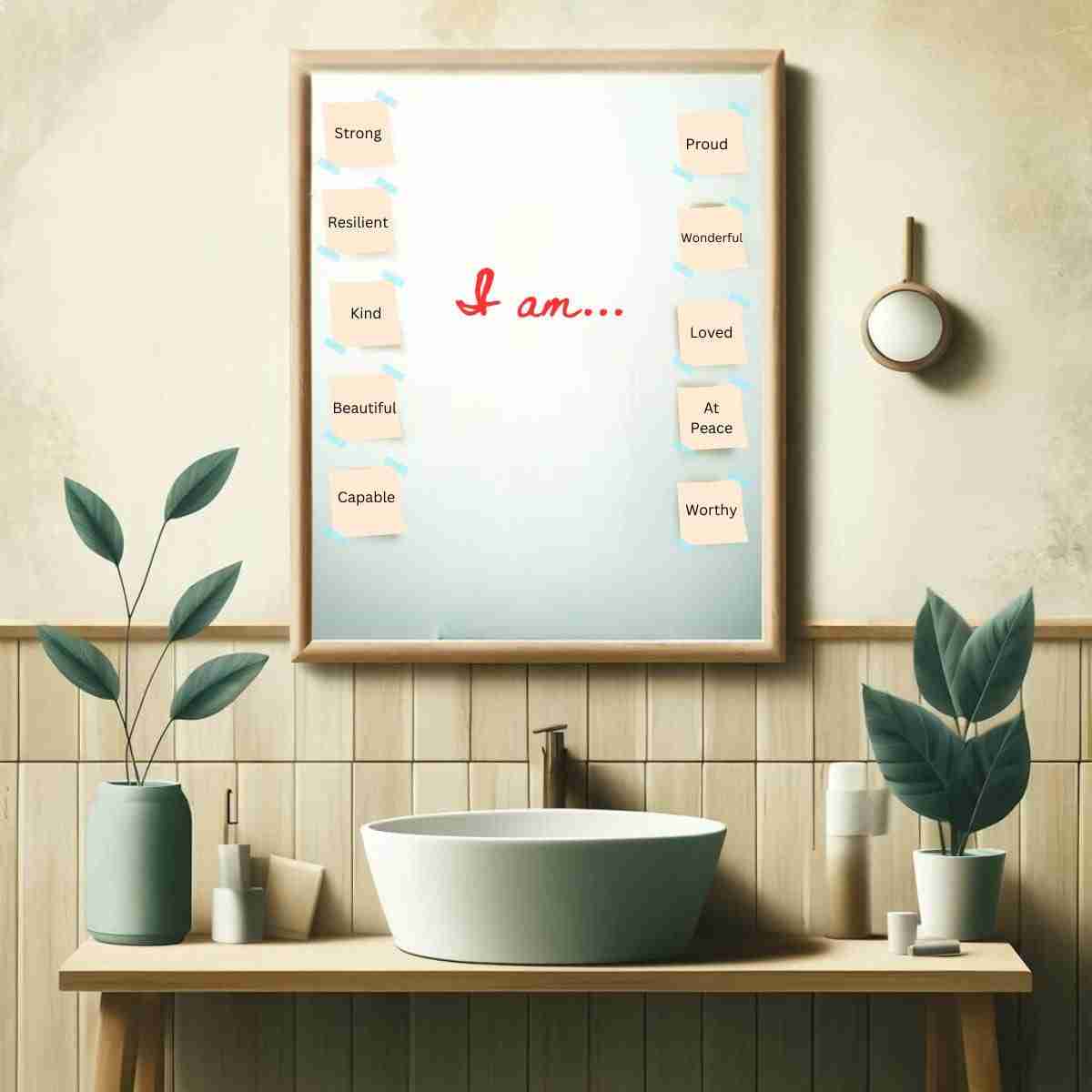

“ I felt like I could finally focus on who I wanted to be. Not who my trauma had turned me into. ” Brilliant!